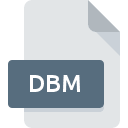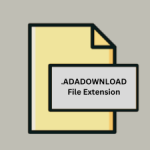.DBM File Extension

ColdFusion Server File
| Developer | Adobe Systems |
| Popularity | |
| Category | Web Files |
| Format | .DBM |
| Cross Platform | Update Soon |
What is an DBM file?
The .DBM file extension is associated primarily with ColdFusion, a web development platform created by Allaire and now owned by Adobe Systems.
These files play a crucial role in database management and are utilized by ColdFusion to enhance the efficiency and performance of web applications.
This article will delve into the origin, history, structure, technical specifications, advantages, disadvantages, conversion methods, and the process of opening .DBM files on various operating systems.
More Information.
ColdFusion was initially developed by brothers Joseph J. Allaire and Jeremy Allaire in 1995 under the company Allaire Corporation.
The primary goal was to simplify the process of connecting web pages to databases, thereby enabling the creation of dynamic, data-driven websites.
The .DBM file format was introduced as part of this vision, providing a way to manage database information efficiently.
With ColdFusion, developers could use a scripting language similar to HTML, known as CFML (ColdFusion Markup Language), to interact with databases.
The .DBM files facilitated this interaction by storing and managing the necessary data in a structured manner.
Origin Of This File.
The .DBM file extension stands for “Database Management.” In the context of ColdFusion, .DBM files are often used to store data in a database format.
ColdFusion itself is a robust and dynamic platform designed to facilitate the rapid development of web applications by integrating a variety of functionalities, including database management, server-side scripting, and API integration.
File Structure Technical Specification.
The structure of .DBM files is designed to optimize database operations within ColdFusion applications. Although the exact format can vary depending on the specific implementation and version of ColdFusion, the general structure includes:
- Header Information: Contains metadata about the file, such as version number, creation date, and author information.
- Data Segments: Organized into records and fields, similar to traditional databases, but optimized for the ColdFusion environment.
- Indexing Information: Facilitates fast lookup and retrieval of data, crucial for web applications where performance is a key concern.
- Data Types: Supports various data types including integers, floating-point numbers, strings, and binary data.
- Compression: Often includes built-in compression to reduce file size and improve performance.
Technical specifications of .DBM files include:
- File Extension: .dbm
- MIME Type: application/x-dbm
- Encoding: Typically binary, although text-based formats can also be used.
How to Convert the File?
Converting .DBM files to other formats can be challenging due to their proprietary nature and binary format. Some potential approaches include:
- ColdFusion Tools: Use ColdFusion’s built-in tools and scripts to export the data into more common formats like CSV, XML, or JSON.
- Custom Scripts: Develop custom ColdFusion scripts to read the .DBM file contents and write them to a new file format.
- Third-Party Tools: Explore third-party tools and utilities that may offer conversion capabilities for .DBM files, although such tools are rare.
Advantages And Disadvantages.
Advantages:
- Performance: .DBM files are optimized for fast data retrieval and manipulation, making them ideal for web applications where performance is critical.
- Integration with ColdFusion: Seamless integration with ColdFusion applications allows for efficient database management using CFML.
- Flexibility: Supports various data types and complex data structures.
- Compression: Built-in compression helps reduce file size and improve load times.
Disadvantages:
- Proprietary Format: Being specific to ColdFusion, .DBM files may not be easily usable outside of this platform.
- Limited Documentation: Comprehensive documentation and support resources for .DBM files can be limited compared to more widely used database formats.
- Compatibility: Opening and manipulating .DBM files outside of a ColdFusion environment can be challenging.
How to Open DBM?
Open In Windows
- ColdFusion Administrator: The easiest way to open and manage .DBM files is through ColdFusion Administrator, which provides a user-friendly interface for database management.
- Text Editors: For basic inspection, .DBM files can be opened with text editors like Notepad++ or Sublime Text. However, due to binary encoding, the content may not be human-readable.
- Database Tools: Tools like DB Browser for SQLite or DBeaver can sometimes open .DBM files, especially if they have been converted to a more standard format.
Open In Linux
- ColdFusion on Linux: Install ColdFusion on a Linux server to manage .DBM files directly.
- Command Line Tools: Use command-line tools like
catorvito inspect the file contents. - Database Tools: Tools like DBeaver or SQLite can be used for viewing and converting .DBM files.
Open In MAC
- ColdFusion Administrator: ColdFusion can be installed on macOS, allowing for the same management capabilities as on Windows.
- Text Editors: Use editors like Sublime Text or BBEdit to view the file contents, though readability may be limited.
- Database Tools: Similar to Windows, use tools like DBeaver for database management and conversion.













